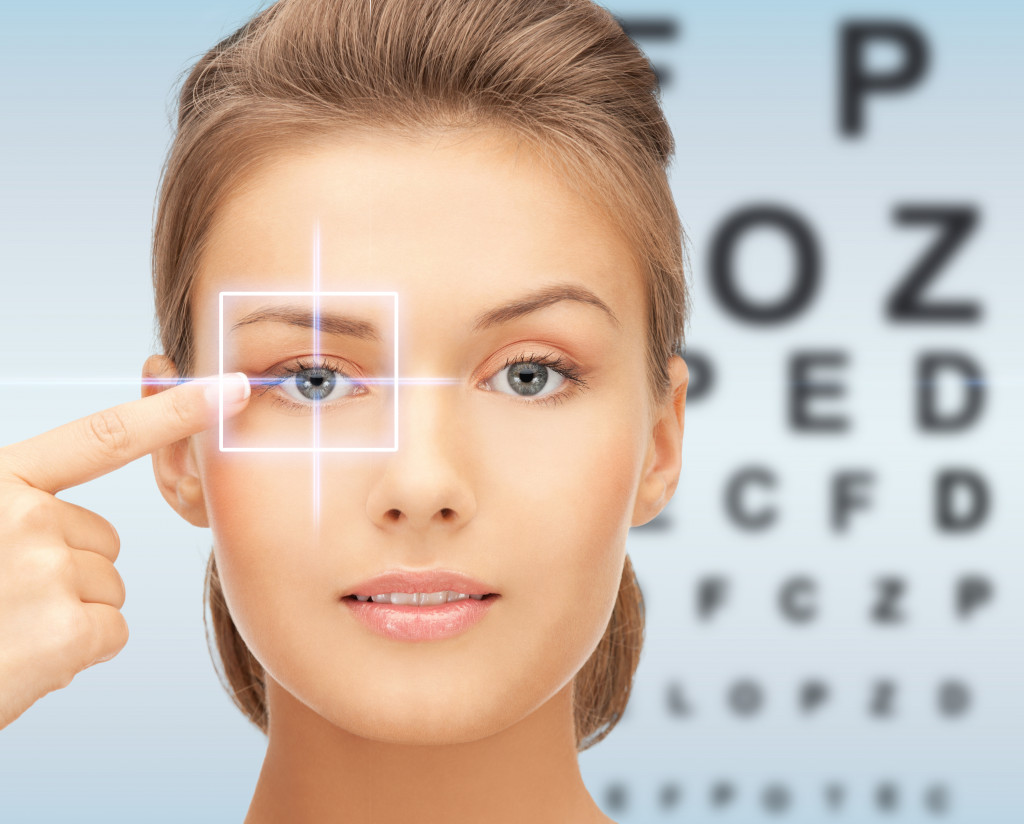Taking care of your eyes is essential at any age. Still, your risk for specific eye diseases increases as you get older. Women are especially susceptible to certain eye diseases, such as dry eye syndrome, age-related macular degeneration, and cataracts. In this blog post, we’ll look at some of the most common eye diseases that affect women and provide tips on how to prevent them.
Dry Eye Syndrome
Dry eye syndrome is when your tears can’t lubricate your eyes well enough. It has many causes, such as menopause, medications, tear duct problems, and aging. Symptoms of dry eye include itching, burning, redness, and a sandy or gritty feeling in the eyes.
If you are experiencing symptoms of dry eye, there are a few things you can do to help alleviate them. Use artificial tears or ointments to lubricate your eyes if they feel dry. Make sure to blink often, especially when working at a computer screen or reading for long periods. And lastly, try to avoid smoke and other irritants that can worsen dry eye.
Astigmatism
Astigmatism is a common eye disorder that causes blurred vision due to an irregularly shaped cornea. It is often caused by genetics, and women are more likely than men to be affected by it. Symptoms of astigmatism can include headaches, fatigue from squinting, difficulty reading or seeing objects at a distance, and sensitivity to light.
If you think you may have astigmatism, you must see an eye doctor immediately. An eye exam can help your doctor diagnose the condition and determine the best course of treatment. Treatment options may vary, but LASIK surgery is becoming increasingly popular for treating astigmatism. Successful LASIK eye surgery can correct astigmatism and improve vision quickly, safely, and with minimal recovery time.
Myopia
Myopia, also known as nearsightedness, is a vision disorder where objects close to you are in focus but those far away are blurry. It occurs when the eyeball is too long, or the cornea has too much curvature. Women are more likely than men to suffer from myopia, and its prevalence increases with age.
If you are nearsighted, you can use glasses or contact lenses to improve your vision. For more permanent solutions, there are also refractive surgeries such as LASIK and PRK that reshape the cornea, thus improving the image.
Age-Related Macular Degeneration
Macular degeneration is the primary reason for vision loss in adults over 50. The macula, responsible for one’s central vision, starts to break down when this occurs. It can happen gradually or quickly; without treatment, it could cause blindness.
There are 2 types of macular degeneration: wet and dry. The more common type is dry macular degeneration, which refers to the thinning or deterioration of the macula. Although wet macular degeneration is less joint, it is much more severe. Wet MD occurs when abnormal blood vessels grow and leak beneath the retina.
There is no cure for macular degeneration, but treatment options are available depending on stage and severity. Suppose you are diagnosed with early-stage dry macular degeneration. In that case, treatment may not be necessary as vision loss is usually gradual. However, if you have wet macular degeneration or advanced dry macular degeneration, medicines such as laser therapy or injections into the eye may be recommended by your doctor to stop vision loss.
Cataracts

A cataract is a clouding of the lens in the eye that affects vision. Cataracts typically develop slowly and painlessly over time but can sometimes form rapidly after an injury to the eye. Symptoms of cataracts include blurry vision, trouble seeing at night or in low light situations, double vision in one eye (monocular diplopia), faded colors or yellowing of pictures (photophobia), sensitivity to glare from lights (halos), and new eyeglass prescriptions more often than usual (astigmatism).
Cataracts are most commonly caused by aging but can also be caused by injuries, certain medical conditions such as diabetes mellitus, prolonged use of steroids, or exposure to ultraviolet radiation from sunlight or tanning beds/lamps. There is no prevention for age-related cataracts, but wearing UV-protective sunglasses outdoors can help prevent cataracts caused by exposure to sunlight.
Treatment for cataracts typically involves surgery to remove the cloudy lens and replace it with an artificial intraocular lens (IOL). Surgery is usually successful in improving vision, although multiple surgeries may be needed if the cataract grows back (recurrent cataract) or other problems develop, such as Glaucoma.
The bottom line
Women are at a higher risk than men for developing certain eye diseases, such as dry eye syndrome, age-related macular degeneration, and cataracts. However, there are steps that women can take to prevent these diseases or slow down their progression. Wearing sunglasses outdoors, blinking often, using artificial tears when needed, and getting regular comprehensive dilated eyes exams are all excellent ways to protect your vision.

